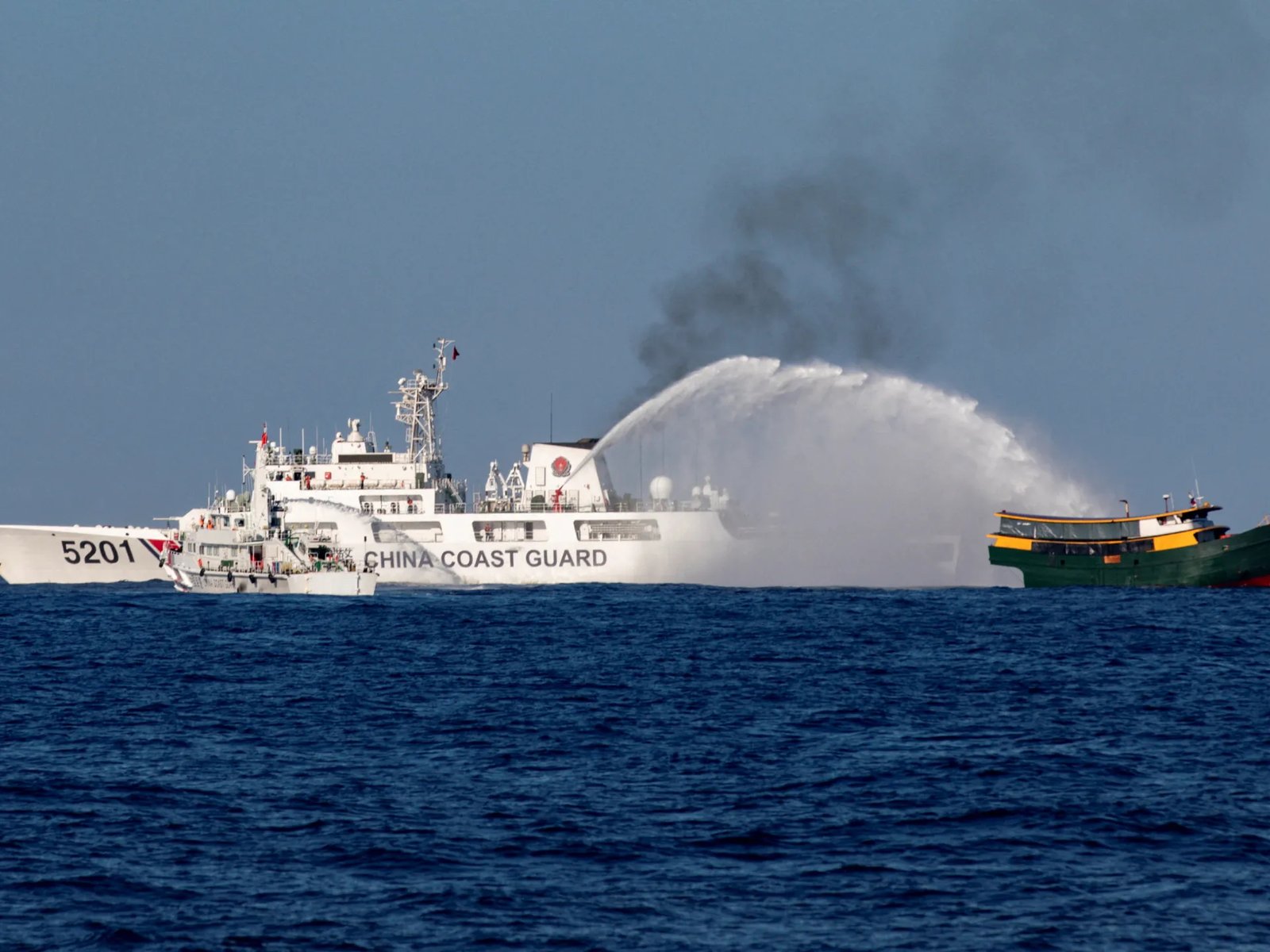Everyone is Watching the Waves, but Who is Steering the Ship?
A Commentary on the 15th Annual South China Sea Conference
Sherry Chen
Introduction: Mapping Stormy Seas, Missing the Compass
At the 15th Annual South China Sea Conference hosted by the Center for Strategic and International Studies (CSIS), the room was filled with high-level intellects, clear data, and firm policy convictions. The South China Sea, they agreed, remains one of the world’s most strategic flashpoints—a space where maritime law, military power, and regional identity collide. There was no shortage of insight. Yet as each panel closed, one uncomfortable question lingered: Where does this all lead?
This commentary explores the strengths and limitations of both the content and structure of the conference, not to diminish its value, but to examine the gap between what was said and what must still be done. Because, as sharp as the analysis was, China is constructing realities while the United States is still perfecting its critique. Unless insights from conferences like this one translate into actionable policy, the wave of momentum risks receding before it reaches shore.
Part I. Voices on the Water: What the Conference Got Right
1.1 Strategic Breadth, Regional Realism
The conference achieved what few gatherings manage: a clear-eyed, multifaceted picture of a contested sea. Panel 1 laid the groundwork with updates on maritime developments—China’s intensified patrols around Scarborough Shoal, Vietnam’s silent but steady land-building, and Malaysia’s increasingly cautious hedging. These weren’t abstract power plays. They were real, strategic behaviors with material consequences.
What made the analysis particularly compelling was its regional grounding. Speakers from Southeast Asia weren’t treated as passive observers but as critical navigators. Phuong Thao Nguyen’s comments on Malaysian public opinion were especially illuminating: in just two years, favorable views toward China jumped from 39% to 77%, driven by targeted influence campaigns and economic dependence. That’s not a statistic—it’s a strategy unfolding in real time.
And crucially, the Chinese voice was present. Liu Xiaobo offered Beijing’s legal rationale, defending its baseline declarations and framing its actions as consistent with historical continuity and law enforcement, not aggression. While his remarks mirrored official state lines, their inclusion gave the conference a rare and necessary balance. China’s position wasn’t caricatured. It was stated, interpreted, and constructively questioned.
The panels didn’t stay confined to hard security. Panelists discussed scientific diplomacy, public messaging, and disinformation, recognizing that power today isn’t only about guns and ships, but about stories and signals. The South China Sea, in this framing, is as much a battlefield of narratives as it is a theater of vessels.
1.2 Sharp Diagnosis, Soft Prescription
And yet, for all its analytic strength, the conference pulled back when it came time to prescribe. Panelists spoke frequently of “capacity-building,” “freedom of navigation,” and “rules-based order,” but these phrases remained mostly aspirational. Scientific diplomacy was praised, but no one explained how it could be institutionalized. Could ASEAN host a regional marine research hub? Could Canada or India fund a joint environmental monitoring system? These were the questions left unasked.
No one addressed ASEAN’s structural paralysis either. Its centrality was invoked repeatedly, but its limitations—lack of enforcement capacity, consensus paralysis—were diplomatically avoided. And while U.S. deterrence strategy was applauded, few asked what happens if deterrence fails. What’s Plan B if China escalates and Southeast Asian nations are left to choose between appeasement and abandonment?
In short, the conference diagnosed the symptoms brilliantly—but hesitated to write the prescription.
Part II. Beautiful Vessel, Missed Voyage: Structure That Smoothed, But Didn’t Stir
2.1 Smooth Flow, Flat Summit
The structure was classic and polished. It opened with tactical updates (Panel 1: “States of Play”), moved through legal analysis, alliance dynamics, and closed with a broader look at external actors. Admiral Stephen “Web” Koehler’s keynote provided strategic closure, emphasizing deterrence, regional unity, and U.S. naval posture. Each session followed a reliable formula: moderator framing, expert input, and Q&A.
But it all flowed too smoothly.
There was no mechanism to stitch panels together, no session designed to debate, challenge, or synthesize across perspectives. Legal scholars weren’t asked to confront military pragmatists. Regional voices weren’t given a chance to respond to great power assumptions. What emerged was a series of well-lit tanks—insightful, yes, but isolated.
What the event needed was a mid-conference roundtable, a cross-panel synthesis, or a “Red Team” segment where ideas could clash and evolve. Instead, it moved like a luxury cruise—elegant and safe, but circling familiar waters rather than steering into unknowns.
2.2 Missing Actors, Missing Momentum
Even more striking was the absence of those most affected. There were no local fisherfolk, no civil society representatives, no young maritime advocates—even though they live daily with the consequences of reef degradation, illegal fishing, and strategic tension. We heard plenty from governments, but little from those who survive because of, or despite, the sea.
The result was a kind of strategic elitism: the very people most vulnerable to maritime coercion or environmental collapse were spectators in a conversation about their future.
Then, the curtain fell quietly. No joint statement. No roadmap. No working groups announced. No pilot projects proposed. The lights dimmed on a stage well-set, but empty of actors willing to take the next step. What could have been a launchpad became a loop—an elegant repetition of existing insight, left to echo without action.
Conclusion: If Talk Floats, What Grounds It?
There’s no doubt the conference succeeded in its immediate goal to convene bright minds, surface sharp insight, and elevate maritime awareness. But in the long run, what matters more than what was said is what is done.
Because right now, the U.S. is criticizing China on paper with law and essays; China is constructing realities in steel and sand. The conference recognized that imbalance, but hadn’t yet corrected for it. Insight must become influence. Panels must become pilots. Thought must become power.
If next year’s gathering wants to make a real impact, it must bridge strategy and implementation, include the people whose lives ride the tides, and dare to ask what happens when deterrence falters and diplomacy stalls. Otherwise, it risks becoming part of the performance, well-intentioned yet ultimately inconsequential.
Until then, we remain on calm waters—watching the storm gather, and deciding who’s truly steering the ship.
 Sherry Chen is a Research Associate at South China Sea NewsWire (SCSNW), a regional news and analysis platform focused on political, economic, and strategic developments in the South China Sea, and is currently studying in a dual program between Columbia University and Sciences Po Paris.
Sherry Chen is a Research Associate at South China Sea NewsWire (SCSNW), a regional news and analysis platform focused on political, economic, and strategic developments in the South China Sea, and is currently studying in a dual program between Columbia University and Sciences Po Paris.


